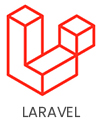- Mail Address info@flyinglionmedia.net
- Phone Number +91 9033072038
X
About Us
We are offering services which help your business grow online through leads and revenue. Flying Lion Media pvt ltd is one of the best digital marketing agencies in Ahmedabad, India which is committed to serving its clients with best practices of digital marketing services.
Contact UsContact Info
- 619, Shivalik Shilp, Iscon Cross Road, SG Highway, Ahmedabad
- +91 9313565492
- info@flyinglionmedia.net
- Week Days: 09.30 to 18.30 Sunday: Closed





Website Development
In the web’s vast tapestry, we craft bespoke portals that are more than just URLs; they are gateways to your digital universe. With every line of code, we build bridges of innovation, connecting your ideas with the world in a visually stunning and functionally seamless dance of technology.
Our Web Designing Process
We help you in crafting functional and high-performing websites with the help of our effective web development services.

1. Defining the Project’s Scope and Goals
This step involves clearly defining the website’s objectives and determining the features and functionality required to achieve those goals. Thus, before you begin the process of website design, you should ask yourself the following questions:
- What is the purpose of your website?
- Who is the audience you’re aiming for?
- What primary goals do you want your website to achieve?
- What products and services are you hoping to provide your clients?
- What advantages does your current website offer, if any?
- What changes do you need to redesign the existing website that helps you achieve your business objectives?
- How well are your rivals doing?
2. Planning and Strategy
It is the second most important step in web design. A web design agency must first do some planning & make strategies to gather useful information related to its target audience & competitors.
Understanding the goals and objectives of the target audience and competitors before creating a website always help you to stay one step ahead. And will help to create a website that meets the client’s needs and stands out in the market.
Apart from that, you can also utilize Gantt charts or other project development tools to develop realistic project planning for the entire procedure. It will not only assist you in meeting deadlines, but it will also enable you to generate products that will delight your clients.
3. Designing Wireframes and Mockups
A site cannot be built without a sitemap, just as a house cannot be built without a blueprint.
The sitemap is the backbone of any well-designed website. It clarifies the relationships between the various pages and content parts and gives web designers a clear picture of the website’s information architecture.
A further step is to develop a wireframe mockup using some design ideas. Wireframes serve as a framework for storing the site’s visual design and content elements, and they can aid in identifying potential difficulties and gaps in the sitemap.
It helps the website look visually appealing, easy to navigate, and responsive. The design should also be consistent with the client’s brand and target audience.
4. Content Creation
Once the design and layout are complete, the next stage is to develop high-quality content that is informative, entertaining, and relevant to the target audience.
Because if your content is compelling and strong, you can keep clients’ attention and persuade them to make a purchase. When it comes to popular web design trends, content is something that can offer value to your website design.
Aside from increasing engagement, website content improves site visibility for SEO. Therefore, if you want your design process to go quickly and successfully, you should never disregard the content component.
5. Development
After the design, layout, and content are finalized, the next step is to develop the website.
As you are aware, hundreds of websites are available online; therefore, for a website to rank well in Google, it must be developed flawlessly. That is why it is crucial to hire expert web developers.
Although coding is always an option for website creation, non-technical people may always use visual page builders, basic themes, and templates to construct personalized sites without wasting time and money.
Once you have built a website, make sure to get feedback and update as necessary.
6. Testing and Quality Assurance
Before launching the website, it is important to test it thoroughly to ensure it functions properly and is free of errors. The web design company should also perform quality assurance checks to ensure the website meets the client’s requirements and industry standards.
7. SEO and Marketing
SEO and marketing are crucial for the success of any website. A web design agency should optimize the website for search engines and ensure it is easily discoverable by potential customers. The company should also create a marketing plan to promote the website and attract more traffic.
8. Maintenance and Support
A website is never truly finished. Because a website requires regular maintenance and updates to ensure it remains relevant and secure. A web design company should provide ongoing support and maintenance services to keep the website up-to-date and functioning properly.
9. Launch
Launching a website design is the culmination of a comprehensive web design process. After months or even years of planning and development, your website is finally ready to be shared with the world. While the journey may have been long and arduous, ensuring your website is ready for launch day is important.
This includes everything from ensuring that all content is up-to-date, testing the website for any bugs and glitches, and double-checking that all security protocols are in place. Once you’re confident that your website is fully functional and error-free, you can officially launch it to the public.











